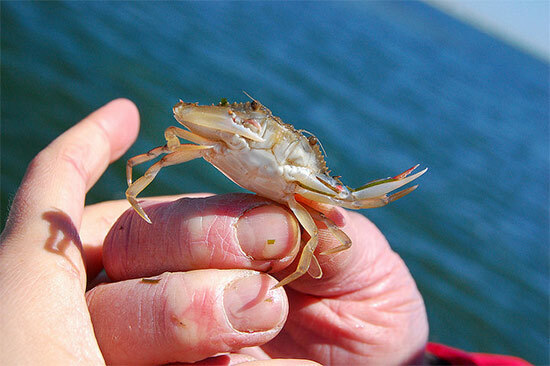Denser grass beds hold more blue crabs
New research suggests higher-quality grass habitat could boost Chesapeake Bay blue crab populations.
Denser grass beds in the Chesapeake Bay could boost the region’s blue crab population, according to a new report from the Virginia Institute of Marine Science (VIMS).

While researchers have long known that blue crabs use grass beds as sheltered nurseries and feeding grounds, this study is the first to show that denser, higher-quality grass beds hold more crabs than open beds where patches of mud or sand separate plants.
These findings are based on fieldwork conducted between 2007 and 2008, during which scientists used a powerful vacuum to collect blue crabs from 104 sites along the shores of the lower Bay.
Graduate student Gina Ralph led the study and said in a media release that her work suggests “the quality of seagrass habitat can influence the population dynamics of blue crabs on a baywide basis.” But underwater grass abundance has declined in recent years, due to warming waters and sunlight-blocking sediment pollution. Blue crabs, too, have suffered population declines, as pollution, predators and human harvest put pressure on the iconic species.
Learn more about the link between grass beds and blue crabs.

Comments
There are no comments.
Thank you!
Your comment has been received. Before it can be published, the comment will be reviewed by our team to ensure it adheres with our rules of engagement.
Back to recent stories